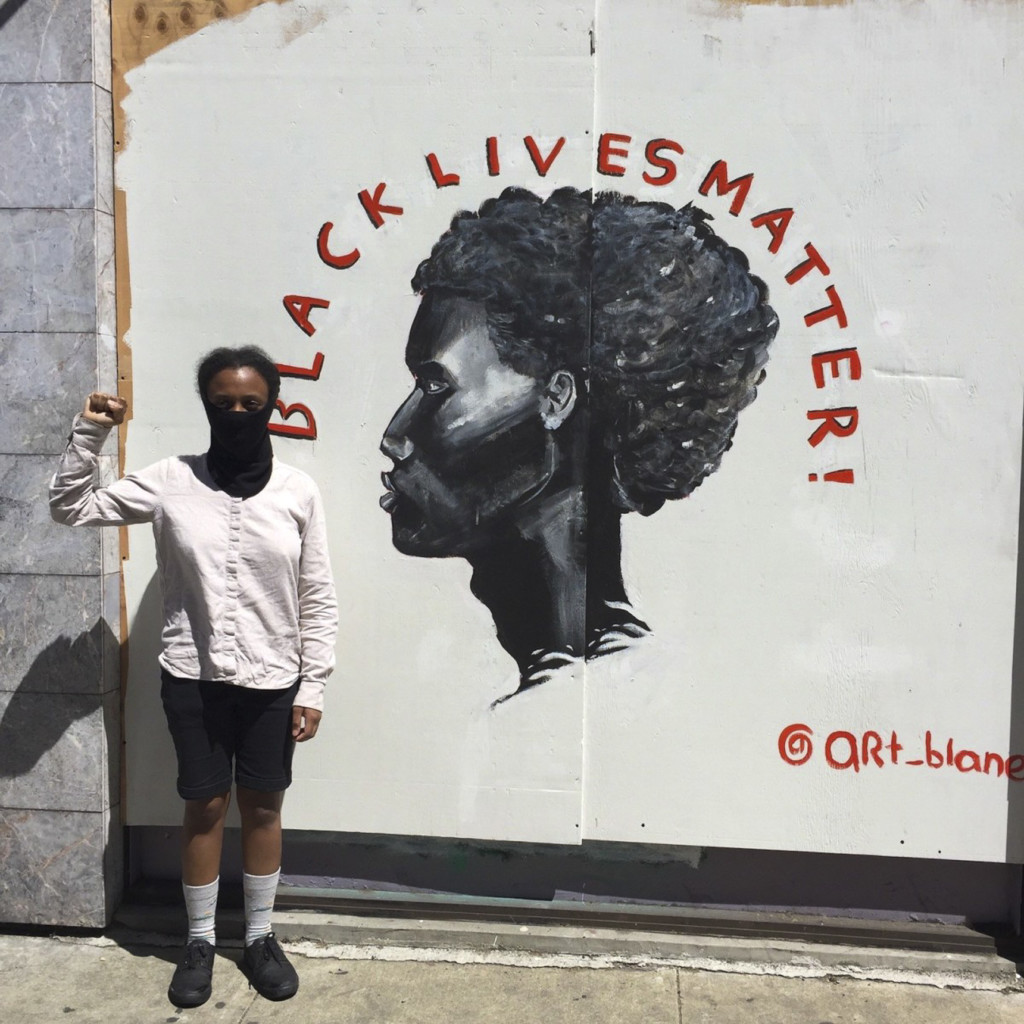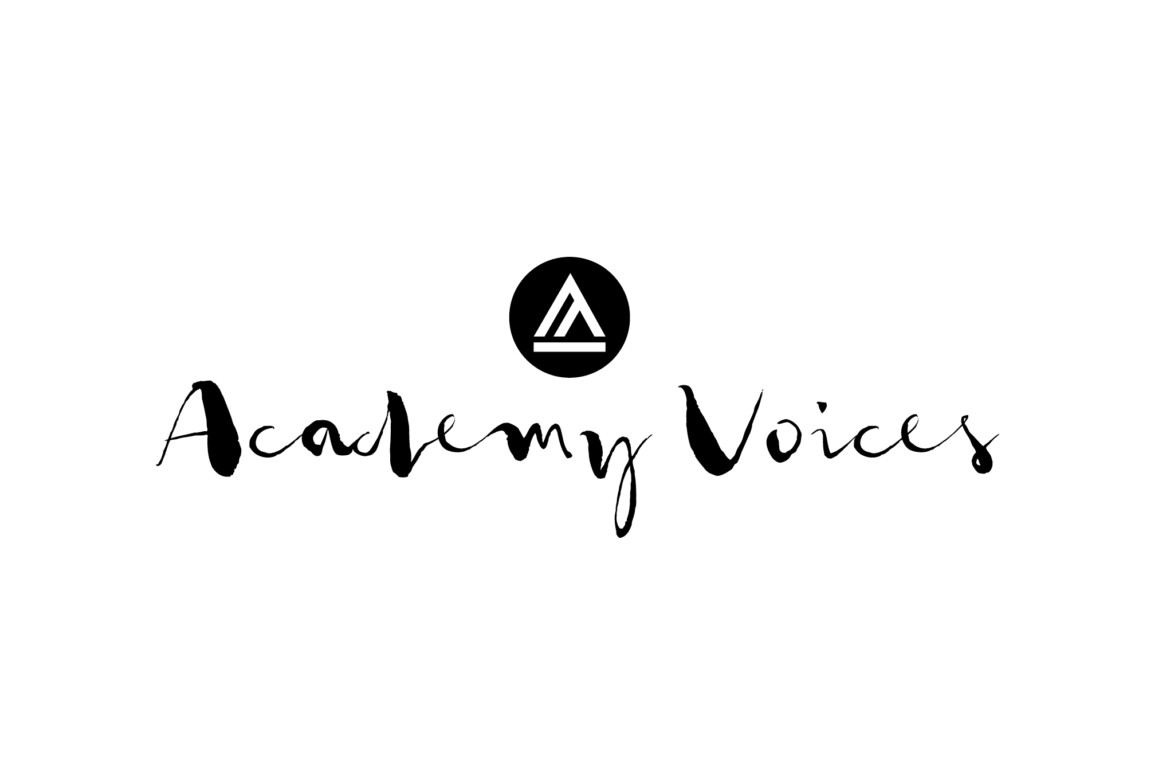By Nina Tabios
For Blane Asrat, an alumna of the School of Industrial Design at Academy of Art University, storytelling was always at the center of art and design. As a product design student, Asrat was motivated to create goods for the voiceless, but these days, the recent graduate devotes her time and creativity to telling similar tales through illustrations and comics.
“To me, personally, a story could just be a moment,” Asrat said. “One portrait can tell a whole story. It’s a snapshot, an emotion. [The] overall goal of my illustrations is to make people more empathetic, to be more open to talking about their emotions.”
This summer, Asrat took her talents to the community and painted a small mural in Oakland following the George Floyd protests this past summer. The piece, which is a profile of a Black man beneath the words “Black Lives Matter,” was a twist on the images she saw throughout her childhood in Texas and caught the attention of media outlets SF Gate and Salon.
“I always looked at white features and white bodies as I was growing up,” Asrat said of the painting. “I’m trying now to provide a different perspective.”
As an artist, Asrat recognizes the impact art can have but when it comes to enacting real change, she believes there is still more work to do. In an interview with Art U News, Asrat talks about the inspiration behind her illustration work and how art is just one part of the current social movement.

Did you always know you wanted to be an artist?
I always knew I wanted to do either art or writing. I think illustration is kind of at the cross-section of that––it’s storytelling but it’s also drawing. Since elementary school, I would just write really long stories in my journal, and I’d draw every few pages what was happening in the stories.
How did you go from wanting to study illustration to studying product design?
It was a lot of different factors. Part of it was I really wanted to push myself out of my comfort zone. I really wanted to [explore] what I could do outside of [drawing] but still be creative. But also, [I was] raised with this idea that you’re not going to make any money as an artist, so you should find something that’s more financially sustainable.
Many of your industrial design projects at school centered around using design for marginalized voices. Does some of that motivation carry over to your illustration work?
I think my illustration work is a lot more personal. For the comic, the goal of that was to talk about femininity and being Black. I wanted that to reach other people, Black women specifically, so they can feel less alone. And that’s what art has always done for me. Reading graphic novels, looking at paintings, illustration, that always made me feel less alone and if I could do that with my art, I’ll feel successful. It may not have the same outreach as product design would, in the sense that product design is such a tangible thing and you’re putting actual products into people’s hands. You’re serving them in a physical way, whereas in illustration you’re serving them more in a spiritual, cerebral, emotional way.
Your work tends to have this graphic novel feel to it, how did you develop this style?
That started in my junior year because I took History of International Comics and Book Arts. That really transformed the way I thought about drawing because that [class] really forced me to sit down in a history class and look at how really incredible artists like Moebius used frames and lines to express their stories. It really forced me to be better at tightening my storytelling. Then in Book Arts, you’re looking at physically constructing books and the feeling of someone turning a page versus the feel of someone scrolling vertically versus horizontally, unfolding something four-ways versus two-ways. Looking at all those physical representations of a book is how I really started to get that style.
You got some press attention for a recent mural you did in Oakland. How did you come up with the idea for your mural? What was the response like?
The mural itself was completely spontaneous. I went with a couple of friends down to Oakland to help with cleanup after the protest but when we got there the cleanup was all over and they were just painting over the graffiti. I asked if we [could] paint other stuff over it and they said that was fine, so I found this blank plywood wall and I just painted the mural. But suddenly I had four interviews of people being like, “I want to talk to you about this mural.”
And then two days later, someone was like, “Do you know you’re on the cover of the East Bay Times?” and then someone else texted me and [asked] if I knew that I was also on the cover of the Mercury News. I was like, “What is going on?” I didn’t do [the mural] for the attention, but I did the interviews because I wanted to have that voice to say what I needed to say.
Do you think art plays an important role during social movements?
It’s complicated because part of me wants to say that art has always been political—and by political, I mean in the sense that it has power—and will continue to be political. But I think art reaches people differently than facts and figures do. I had conversations with people about race, identity, gender oppression, capitalism in terms of numbers, about poverty and prosperity, and it’s just not the same. People tend to be [more] emotionally motivated when they see a comic or murals about police brutality than they [are with] just Black people telling them about police brutality. I kind of wish that it wasn’t just art that [moved] people’s hearts.
With all the attention I got after the mural, it was weird because no one had ever reached out to me about my art before. I almost feel like a lot of Black artists right now are kind of stranded because we got all this attention and now it’s gone, so it almost feels like we were used. But at the same time, that doesn’t take away from the fact that I’m glad this artwork moved some people to make some noise and changes. But are they going to continue to show that support to Black artists?
How are you practicing self-care during this time?
Honestly, sometimes I have to stop drawing. I push myself really hard and sometimes I just have to stop and hit pause. When I’m taking a step back, I read, I run. I’m pretty lucky because I live on Treasure Island, so I have space and I’m distant enough where I can just go out and get fresh air without having to hear cars and crowds of people. Walking, jogging, reading, not producing all the time has been my self-care. And making a lot of food. When I was in school, it was just getting what’s out on Polk Street every day and it’s been really nice to be able to buy food and prepare meals. It’s a whole new world for me now since I graduated.
What are you working on right now?
There’s a project I’ve been working on with a friend and former classmate of mine, E’lan Hawkins, called Picture Blackness. It’s an online gallery space where we’ve been collecting the works of Black artists who use art to share their stories and experiences of living while Black. It’s online at pictureblackness.com and we have an Instagram account.
The comics that I made are the first part of that, but we’re looking for Black artists from all over, not just the Academy. We’ve gotten illustrations and comics. The goal is just to find people to share their stories. And anyone that visits our site can donate to organizations like People’s Program and Black Earth Farms.
